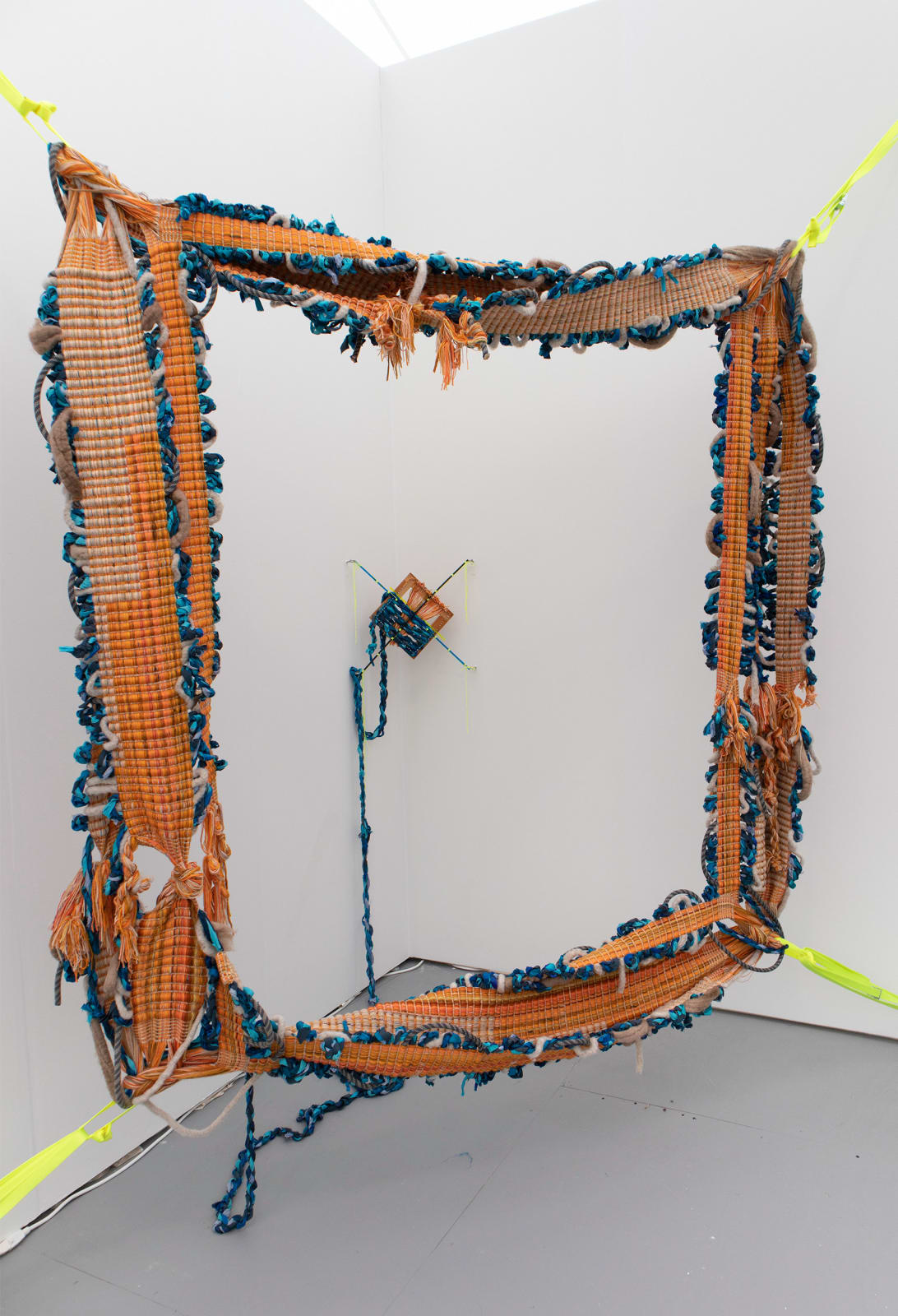Kira Dominguez Hultgren USA, b. 1980
Water is Thicker than Blood, 2021
Wool (handspun, handyed, industrial); silk (yarn, rope); nylon (yarn, rope, webbing); linen; cotton; metal (d-rings, eye bolts, nails); acrylic (yarn, loom bars); wood (frame loom)
108 x 108 x 54 in
274.3 x 274.3 x 137.2 cm
Dimensions variable
274.3 x 274.3 x 137.2 cm
Dimensions variable
Copyright The Artist
My grandmother was a “chameleon,” as she liked to say, able to change her skin to fit the perceptions of those around her. As a woman who lived the extremes...
My grandmother was a “chameleon,” as she liked to say, able to change her skin to fit the perceptions of those around her. As a woman who lived the extremes of her mother’s bootlegged-bathtub-gin and her auntie’s cha, who lived in the wake of crossing oceans, it’s not surprising that she formed her family by water, as much as by blood. Water and wakes – the lifeblood of the stories of immigrants.
When Rachel Poonsiriwong – fellow CCA alum – told me about her idea to curate a show at Root Division, titled Water is Thicker than Blood, I came back to Ann Anlin Cheng’s Melancholy of Race and Christina Sharpe’s In the Wake: On Blackness and Being. Both scholars use generational lenses - personal, family, communal experience - of racism and race, immigration, enslavement, and displacement that get caught up in and form the architectures of “Asian” and “Black” experience. How does one generation’s trauma get re-lived, reenacted, in the next generation? Rather than simply resolving our parents or ancestor’s pain, how are we re-solving these inherited-stories in pieces?
In Water is Thicker than Blood, I wanted to think about the checkbox as patched together, as pulling apart, as twisted and flowing, and something that I step through to find stories formed by blood and water.
Thank you to Rachel for letting me use our conversations over the last 18 months and her title!
When Rachel Poonsiriwong – fellow CCA alum – told me about her idea to curate a show at Root Division, titled Water is Thicker than Blood, I came back to Ann Anlin Cheng’s Melancholy of Race and Christina Sharpe’s In the Wake: On Blackness and Being. Both scholars use generational lenses - personal, family, communal experience - of racism and race, immigration, enslavement, and displacement that get caught up in and form the architectures of “Asian” and “Black” experience. How does one generation’s trauma get re-lived, reenacted, in the next generation? Rather than simply resolving our parents or ancestor’s pain, how are we re-solving these inherited-stories in pieces?
In Water is Thicker than Blood, I wanted to think about the checkbox as patched together, as pulling apart, as twisted and flowing, and something that I step through to find stories formed by blood and water.
Thank you to Rachel for letting me use our conversations over the last 18 months and her title!

